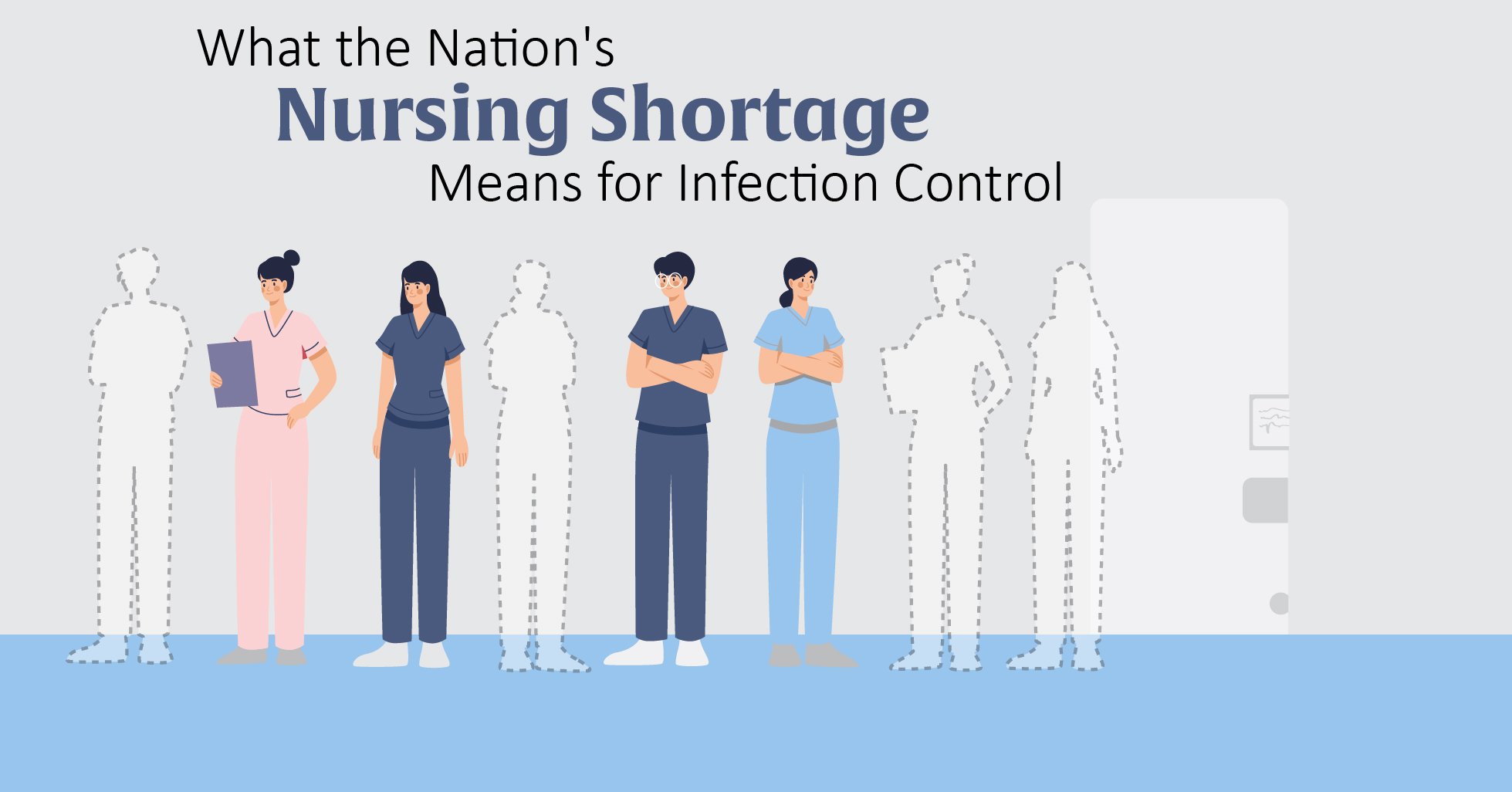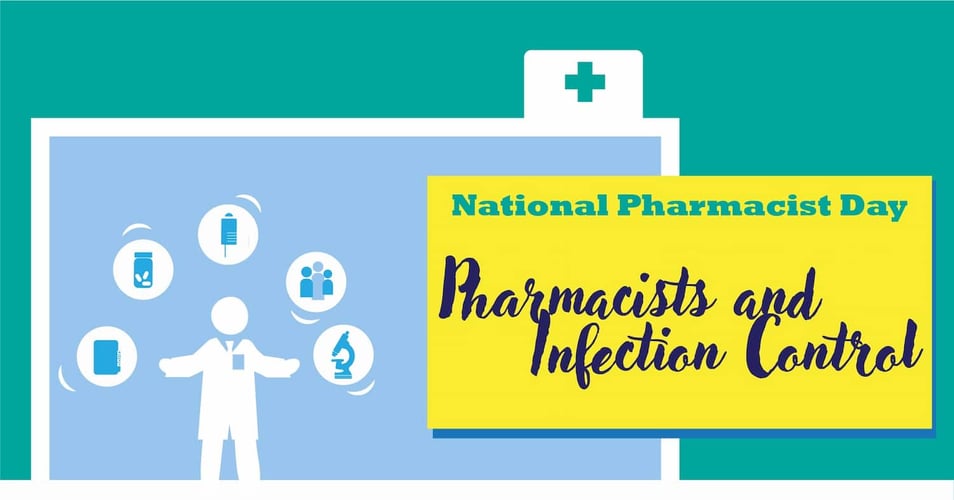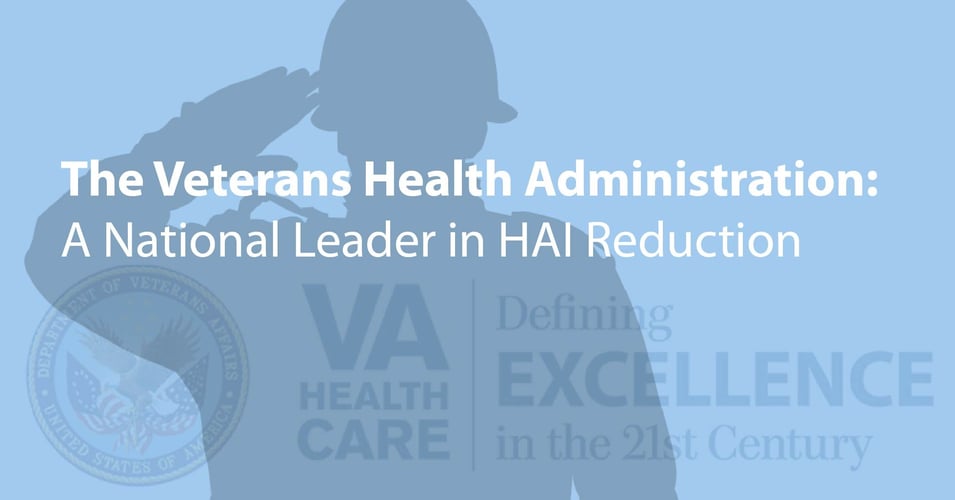
 We recently heard a chilling story: An ER doctor shared that he was treating many of his patients in the waiting room - diagnosing, providing medication, and discharging - not because there was no room in the hospital, but rather because there were not enough nurses. Indeed, there is a significant nursing shortage in the United States. Almost all of us are aware of this professional scarcity thanks to regular news coverage and even personal experience. What many laypeople may not be aware of, however, is that we have been in the midst of a significant nursing shortage not just since COVID-19, but since 2012. In today's post, we will uncover what kind of impact this shortage will have on one of the most critical aspects of hospital care: Infection control and prevention.
We recently heard a chilling story: An ER doctor shared that he was treating many of his patients in the waiting room - diagnosing, providing medication, and discharging - not because there was no room in the hospital, but rather because there were not enough nurses. Indeed, there is a significant nursing shortage in the United States. Almost all of us are aware of this professional scarcity thanks to regular news coverage and even personal experience. What many laypeople may not be aware of, however, is that we have been in the midst of a significant nursing shortage not just since COVID-19, but since 2012. In today's post, we will uncover what kind of impact this shortage will have on one of the most critical aspects of hospital care: Infection control and prevention.
Our nation faces a current nursing shortage as well as a lack of growth to meet future demand. In 18 US states, there are fewer than 12 Registered Nurses (RNs) per 1000 residents, with the largest or most populated states suffering the greatest shortage (California and Texas). Increasing demand for healthcare means a projected 1.2 million new RNs will be needed by 2030.
Why is there a nursing shortage? There are two main reasons: Increased demand and retirement drain. As our population grows older, there is increased demand for skilled nurses to provide care both in hospitals and in long-term care facilities. In just 8 years (2011-2019), the baby boomer generation pushed our population of 65 and older from 41 million to 71 million! This same generation also contains a substantial number of nurses (the average age of a nurse today is 50 years old, and over half of RNs are over 50), meaning these professionals are reaching retirement age now, or will within just a few years. So as we approach 2030, we will need to replace over 1 million RNs - not only filling their positions, but trying to capture their lifetime of experience and skills.
How did COVID impact the nursing shortage? The COVID pandemic brought this nursing shortage into sharp relief. As elective procedures and lockdowns forced many RNs to accept fewer hours and lower compensation, many chose to take early retirement instead. As the pandemic continued, work stresses compounded, leaving many RNs exhausted and burnt out. As a result, a shocking 90% of RNs are considering leaving the profession. Hospitals are also facing unprecedented nursing turnover, as professionals move between facilities in order to find a better fit or a break from high-stress positions.
|
“Overwhelming workloads and mass burn out have plagued frontline nurses for years, and, it appears many have finally reached the breaking point. The survey shatters the notion that current nursing challenges are temporary, anomalous and contingent upon the pandemic. These systemic issues have been mounting, and COVID brought them to a head. If hospital leaders don’t listen to these nurses and respond with sustainable solutions now, they will very soon see significantly more of their already short-staffed nurse workforce leaving.”
-Teri Ridge, RN, Director of Clinical Solutions at Hospital IQ, Hospital IQ Nursing Survey, 2021
|
What happens to patients when there is a nursing shortage? The short answer is not surprising: They have worse outcomes. One study showed that patients return for post-discharge secondary care (readmissions or office visits) at a much higher rate at understaffed locations, while rates of medication errors or delays show an increase as well.
What happens to infection control and prevention if nursing is understaffed? Studies confirm again and again that when units are understaffed, more patients get preventable hospital-associated infections. If nurses do not have time to check catheters, complete proper sterile technique, or even wash their hands because there aren't enough nurses to adequately cover the patients, then patients are more vulnerable to the germs that surround them. One study found that patients on units where both shifts were understaffed were significantly more likely to develop an HAI within 2 days. A report from the Government Accountability Office (GAO) of the federal government showed that when nurses are responsible for 4 or more patients per shift, readmissions increase.
What can be done about the nursing shortage? As described in the GAO report as well as countless other reports and studies, everyone from nurse training programs to hospital CEOs have a role to play. There are currently not enough students in the nursing profession pipeline to meet future demand - not because there isn't interest, but rather, because nursing programs do not have enough faculty to teach all the students who want to enroll in their programs. The American Association of Colleges of Nursing is working to secure federal funding to make support faculty development programs and help recruit and retain RNs as faculty. This kind of support is required after graduation and during the first year of nursing, when studies show that 13% of brand-new RNs consider leaving the profession during their first year. Finally, retaining quality RNs will require that healthcare facilities realign priorities to support their nursing staff, not only with adequate compensation, but also hire the number of RNs required to ensure a healthier work environment (for nurses and patients).
In the meantime, what can healthcare facilities do to protect patients from preventable hospital-associated infections? Studies show that decreasing the biological contamination surrounding the patient - the bioburden - decreases the risk of getting an HAI. This means that cleaning the patient room has never been more important. There is one-time cleaning, which includes most chemicals as well as UV and HP misters, and there is continuous cleaning, which includes surfaces made from copper and copper-infused polymers. These preventive biocidal surfaces actively kill bacteria and other pathogens, keeping the surfaces nearest the patient at benign levels, even between cleaning. Continuous cleaning approaches, because they do not require additional work from staff, could very well be the safety measure that gets us through our nursing shortage with better patient outcomes.
![EOScu Logo - Dark - Outlined [07182023]-01](https://blog.eoscu.com/hubfs/Eoscu_June2024/Images/EOScu%20Logo%20-%20Dark%20-%20Outlined%20%5B07182023%5D-01.svg)




